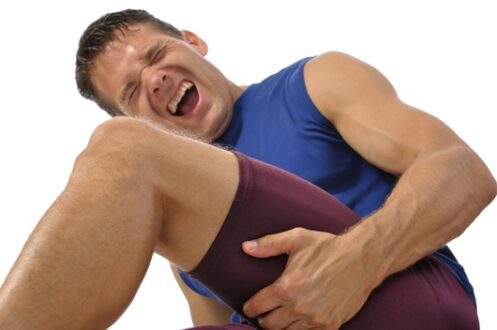First of all, it’s important to know that what are hamstrings and where actually they located in our body? The hamstrings are actually the tendons that attach the large muscles at the back of the thigh to bone. The hamstring muscles are the large muscles that pull on these tendons. Don’t know how but layman refer to the long muscles at the back of the thigh as the hamstring muscles or just hamstrings.
On the other hand, Academic anatomists refer to them as the posterior thigh muscles, and more specifically the biceps femoris muscles. These muscles span the thigh, crossing both the hip and the knee. They originate or begin at just below the buttocks, arising from the bone on which we sit. They connect by means of their tendons onto the upper parts of the lower leg bones. The word hamstring originated from the old English hamm, meaning thigh, while string refers to the characteristic appearance and feel of the tendons just above the back of the knee.
Hamstring muscles are there to bend (flex) the knee. In addition, they also act to straighten as well as extend the hip. Though strange but these large muscles are not very active with normal walking or standing. However, they are extremely important in power activities such as running, jumping, and climbing. Athletes and physically active individuals absolutely depend on healthy, well-conditioned hamstrings. The hamstring pull may occur anywhere along the muscle tendon anatomy, however it most commonly occurs in the middle of the hamstring muscle.

Hamstring Stretches Back Pain treatment with Home Remedies
Mild hamstring strains may not hurt too much. By following the tips, which are given below, you can get rid of strain easily.
Symptoms of Hamstring Stretches Back Pain
There are some symptoms that indicates if someone is suffering from pain due to hamstring stretch. In severe cases where the muscle is torn, it’s impossible to walk or even stand, and you may need surgery. The surgeon will repair the muscles and reattach them. But in case of mild strain, possible symptoms of a hamstring strain are following:
- You feel sudden and severe pain especially during exercise.
- You may feel pain in the back of the thigh and lower buttock while walking, straightening the leg, or bending over
- Tenderness or Bruising
Treatment for a Hamstring Strain
To diagnose a hamstring strain, a doctor or physical therapist usually give a thorough physical exam. If you are suffering from minor to moderate hamstring strains, they usually heal on their own. Just give them some time and be patient. In order to speed up the healing process, following tips maybe helpful.
- First and foremost thing that is really helpful for strains is complete rest. Since the hamstring is stretched with each step as the knee extends or straightens, walking may be difficult. It may be necessary to rest and Crutches may be used temporarily to help get around.
- Icing is considered very helpful. It should be done frequently for 15-20 minutes at a time. The ice should placed on the area of injury and pain. But be careful, direct contact of skin with the ice can cause frostbite.
- Elevation is usually advised in order to decrease swelling. Fluid caused by inflammation can drain back toward the center of the body if the leg is elevated above the level of the heart.
- Compression is also recommended. An Ace wrap may be used for compression. Often one or two 6-inch wraps are applied beginning at the knee and circling the thigh until the wrap ends at the hip. It should feel firm but not too tight to cause pain.
- In order to reduce inflammation, different medications like ibuprofen may be helpful. The medication is not for injury directly rather in controlling the pain of inflammation. Consult your doctor before use it. Self medication is not recommended in this case.
- According to expert opinion, hamstring strains recovery consists of three phases. The first phase decreases only the inflammation of the pulled muscle, the second returns normal blood supply, and the third begins remodeling and repair of the muscle to allow it to return to full function.
- Under natural phenomenon, our body repairs itself by forming scar tissue, if a muscle is torn. Time to heal highly depend upon the injury. It may take four to six weeks for the area to completely heal. If the hamstrings do not return to full function, they are at risk for recurrent injury. Physical therapy is considered also good to increase range of motion and begin gentle stretching and return to activity of the pulled muscle.
 Health & Care Information
Health & Care Information 

